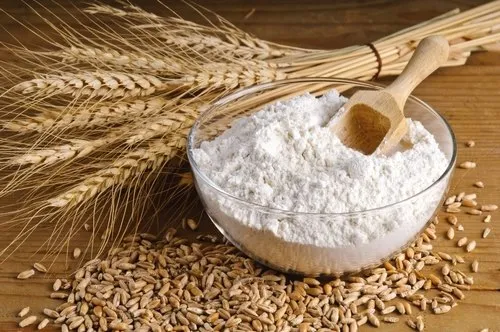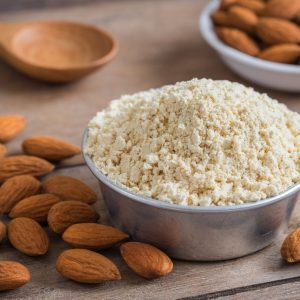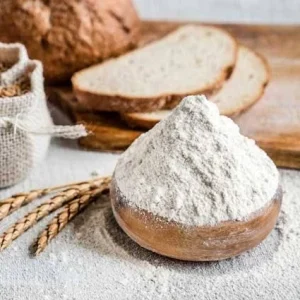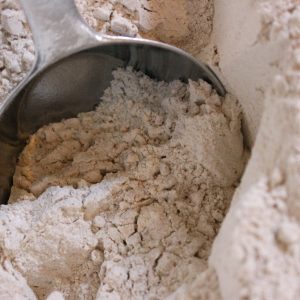Description
Introduction to Kamut Flour
Kamut flour is derived from an ancient grain known as Kamut, which is a trademarked name for Khorasan wheat. This grain has been cultivated for thousands of years and is believed to have originated in the Middle East. Kamut flour is prized for its rich nutty flavor, high nutritional value, and unique texture, making it a popular choice among health-conscious consumers and culinary enthusiasts.
History and Origins of Kamut
Kamut is believed to be one of the oldest grains cultivated by humans, with evidence of its cultivation dating back to ancient Egypt. The grain was revered for its nutritional properties and was often used in religious ceremonies and offerings. Over time, Kamut fell out of favor as modern wheat varieties became more prevalent, but interest in this ancient grain has experienced a resurgence in recent years due to its health benefits and unique flavor profile.
Composition and Characteristics of Kamut Flour
Kamut flour is milled from the whole grain kernels of Kamut, which are larger and more elongated than modern wheat kernels. It is rich in protein, with a protein content ranging from 12% to 18%, making it an excellent source of plant-based protein. Additionally, Kamut flour is high in essential nutrients such as fiber, vitamins, and minerals, including selenium, zinc, and magnesium. These nutrients contribute to the nutritional value of Kamut flour and support overall health and well-being.
One of the key characteristics of Kamut flour is its rich nutty flavor, which sets it apart from other types of flour. This flavor profile adds depth and complexity to baked goods, making them more flavorful and satisfying. Additionally, Kamut flour has a unique texture that lends itself well to a variety of culinary applications, from bread baking to pasta making.
Culinary Uses of Kamut Flour
Kamut flour can be used in a wide range of culinary applications, including bread baking, pastry making, and pasta production. Its rich nutty flavor and unique texture make it a versatile ingredient that adds depth and complexity to dishes.
In bread baking, Kamut flour produces loaves with a hearty texture and a slightly sweet flavor. It can be used on its own or in combination with other flours to create artisanal breads with a unique flavor profile. Kamut flour is also well-suited for making pasta, where its nutty flavor and firm texture complement the richness of sauces and fillings.
In addition to its use in bread and pasta making, Kamut flour can also be used in pastry making to create delicious and flavorful pastries, such as cookies, muffins, and cakes. Its rich nutty flavor adds depth and complexity to these baked goods, making them more satisfying and enjoyable.
Nutritional Benefits of Kamut Flour
Kamut flour offers a range of health benefits due to its rich nutritional profile. It is high in protein, which is essential for muscle repair, immune function, and overall health. Additionally, Kamut flour is rich in fiber, which supports digestive health, regulates blood sugar levels, and promotes satiety. The high fiber content of Kamut flour also helps to reduce the risk of chronic diseases such as heart disease, diabetes, and certain types of cancer.
Kamut flour is also a good source of essential vitamins and minerals, including selenium, zinc, and magnesium. These nutrients play a crucial role in various physiological processes in the body, including immune function, metabolism, and bone health. Including Kamut flour in your diet can help ensure that you’re getting a wide range of nutrients to support overall health and well-being.
Tips for Using Kamut Flour
When using Kamut flour in recipes, it’s important to consider its unique characteristics and adjust the recipe accordingly. Here are some tips for working with Kamut flour:
- Measure the flour accurately using a kitchen scale or measuring cups designed for dry ingredients.
- Experiment with different ratios of Kamut flour to other flours to achieve the desired texture and flavor in your dishes.
- Be mindful of the nutty flavor of Kamut flour and how it may complement or contrast with other ingredients in your recipes.
- Store Kamut flour in an airtight container in a cool, dry place to maintain its freshness and prevent moisture absorption.
By following these tips, you can make the most of Kamut flour in your cooking and baking adventures, creating delicious and nutritious dishes that showcase the unique flavor and texture of this ancient grain.
Conclusion: Rediscovering the Richness of Kamut Flour
Kamut flour is a versatile and nutritious ingredient that offers a range of culinary possibilities. From bread baking to pastry making, its rich nutty flavor and unique texture can elevate a variety of dishes, adding depth and complexity to your cooking. Whether you’re making artisanal breads, homemade pasta, or delicious pastries, Kamut flour is a valuable ingredient to have in your pantry. With its rich nutritional profile and ancient origins, Kamut flour invites you to rediscover the richness and depth of flavor that this ancient grain has to offer.





Reviews
There are no reviews yet.